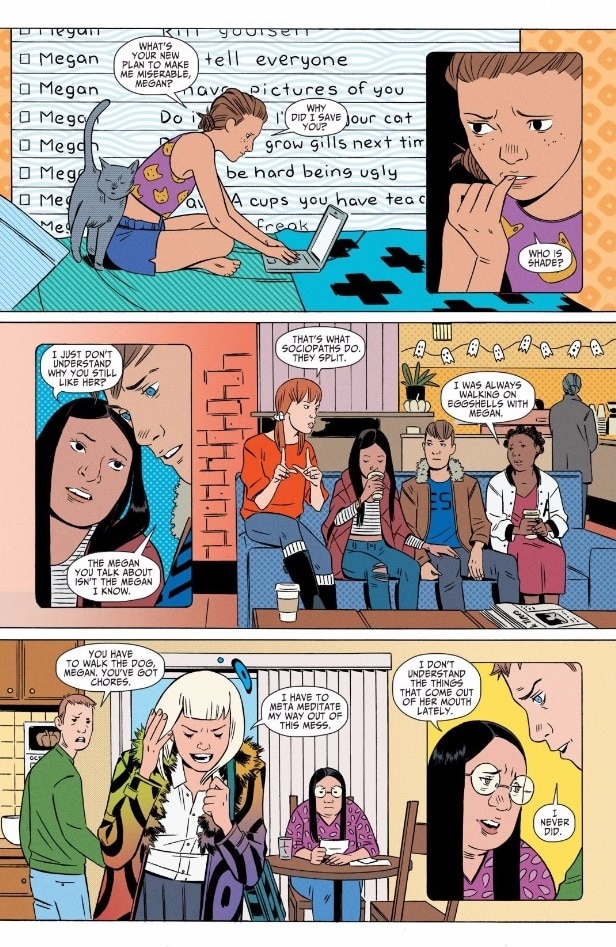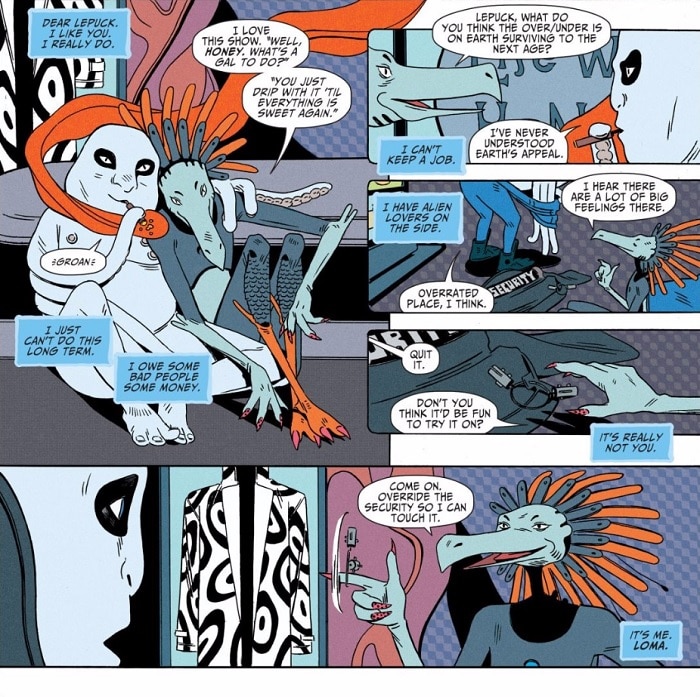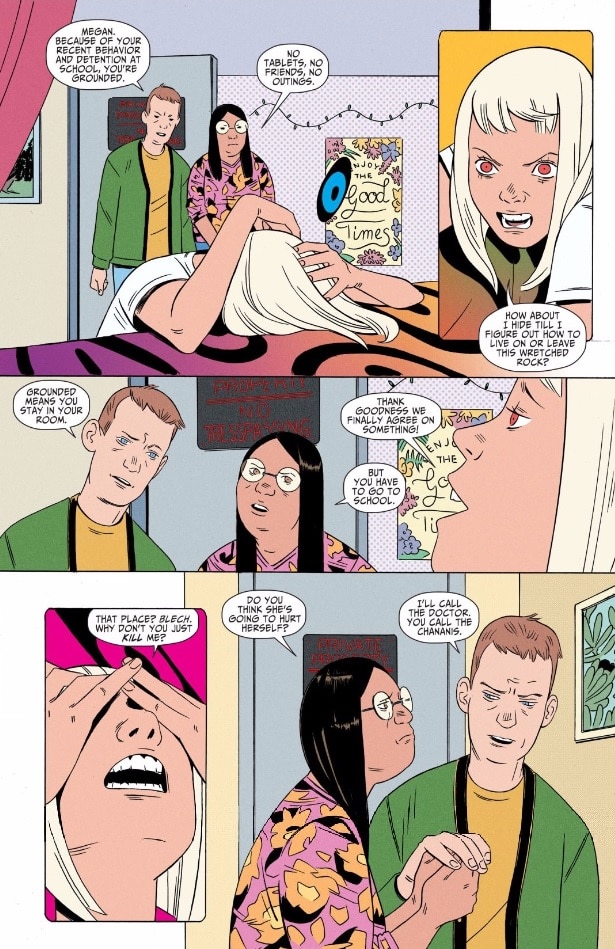Trust me on this one: high school is tough for teenage girls. As a former teenage girl myself, I can tell you that one from experience. Even when things are going well—sometimes especially when things are going well—it’s a challenge.
But that’s probably not new information for you. It could be, I suppose, depending on your background, but stories about the trials and tribulations of high school girls aren’t exactly a new concept. You’ve probably seen and read more than a few. You know the ones I mean: the quirky, bubbly protagonist learns a valuable lesson about life in the face of her bully, who’s often a girl who only cares about things like fashion, money and social stratification. Geeks vs. nerds. The popular girl vs the unpopular girl.
It’s a fun story to tell.
...It’s just not a very honest one.
So, let’s be honest for a second. Let’s talk about SHADE, THE CHANGING GIRL.

The problem—and, really, it’s not so much a problem in the literal sense as it is an expectation—with the stories we love to tell about girls in high school is that there’s always a quote-unquote “hero.” These are stories about underdogs and outsiders who are, by no fault of their own, kept on the fringes. They’re good in the sense that they’re not bad—they’re not the bullies they’re up against, they’re not the popular clique, they’re not mean. They’re easy to root for because they’re defined by the things they’re not, leaving a big, wide-open empty space for us to fill in the blanks of what they are with things that we like.
They’re us, but only the best parts of us. The parts we want to showcase.
Here’s where things get interesting in Shade, the Changing Girl: Loma Shade is not a hero. Megan Boyer is definitely not one.
They’re both pretty rotten people, if you get right down to it. And that’s great.
Shade is able to flip the script on the expectations of the high school girl narrative by making the underdog and the bully literally the same person. They may be two distinct entities, but as far as the world around them is concerned? They’re one and the same. And if there’s one thing I learned as I survived high school through my teenage years, it’s that those lines—the ones that help us delineate between the hero and the villain of the story—they don’t really exist in a world that’s not two-dimensional and divided up into panels.

Admittedly, it’s a little strange to argue for the “realism” of a story about an avian, bodysnatching alien with a dripping, technicolor coat that may or may not be the physical manifestation of madness. But that’s what makes Shade really work. Loma may be literally from another planet in the scope of the story, but in a topsy-turvy way, it only makes her more relatable.
You’d be hard pressed to find a teen girl, or a former teen girl, who won’t tell you that there were times they felt like an alien.
It gets better.
Loma’s only one part of this equation. Her host body, Megan, the comatose shell of a former capital-M, capital-G Mean Girl is still surrounded by the friends and family she hurt, leaving Loma, moral complexity and ethical blurring aside, to deal with the fallout of her actions.
Make no mistake about it: Loma’s a selfish person. She’s motivated almost entirely by her own gain. From escaping her home planet of Meta, to the commandeering of Megan’s body, she’s working specifically because she believes herself to be slighted somehow and that her comfort is worth more than the comfort of those around her. And she just so happened to hop into the life of someone who operated under those same pretenses.

It can be brutal to read at times, especially if you’re anything like me and you’ve been there. As you work your way through Shade the Changing Girl Vol. 1, you’ll probably come up against some hard-to-stomach truths that ring a little too close to home: Loma, laying prone in bed waxing poetic about how she feels overrun by emotions that don’t belong to her; barking at her parents about how she wants to hide until she can just leave Earth all together. Megan’s former cliques sneering at and shuddering from a person they suddenly no longer recognize as familiar.
What Shade gets most right, where its heart beats the strongest, is in its overwhelming honesty. Loma isn’t a quirky heroine ready to take down the popular bully. She’s not the peppy, bright-eyed, but misunderstood underdog. The things she has to overcome, the way she has to grow, they’re (quite literally) twisting and turning inside her.
Sure, it’s psychedelic. It’s aliens and hyperspace. It’s rainbow-smeared surrealism. It’s hurt feelings and broken friendships. It’s confusion given four walls and a roof.
It’s high school the way that high school actually feels when you’re caught in its four-to-five year hormonal tar pit.
Loma might be from another planet, and Megan might be a bully turned extra-dimensional wraith, but somehow, someway, the fusion of the two produced the most earnestly human teenage girl comics have to offer.
SHADE, THE CHANGING GIRL VOL. 1: EARTH GIRL MADE EASY by Cecil Castellucci and Marley Zarcone is now available in print and as a digital download.
Meg Downey writes about Rebirth for DCComics.com and covers DC’s Legends of Tomorrow for the #DCTV Couch Club. Look for her on Twitter at @rustypolished.




















